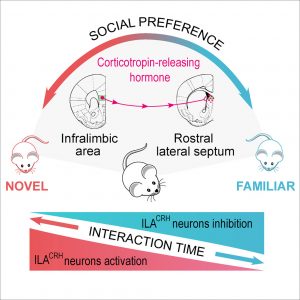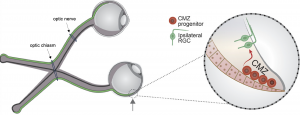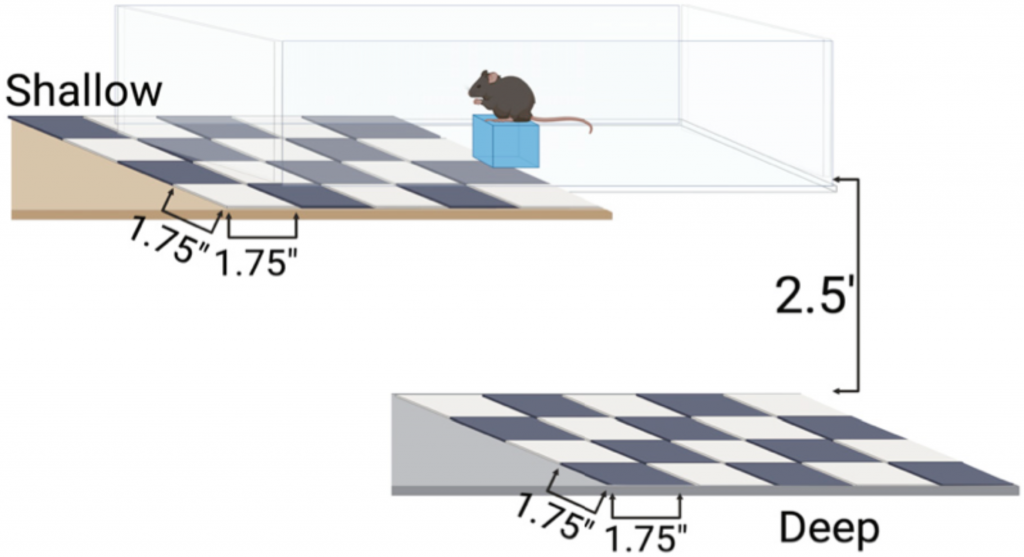The human body contains trillions of cells, which have extremely diverse functions. Remarkably, every one of these cells has the same genetic code. This diversity is possible because of the developmental process of differentiation. As an organism grows, cells take on traits that are useful in a particular context. For example, skin cells produce a protein called keratin that makes skin tough in order to protect the rest of the body from the outside world. Other cells don’t produce keratin because it would hinder their function. Once cells have differentiated and taken on a particular role, they can only generate more of the same kind of cell – skin cells only divide into more skin cells. This is because sections of DNA are hidden away during differentiation and stay hidden after the cell divides, ensuring that all the cells in a particular organ (like the skin) act like they’re supposed to.
To turn one type of differentiated cell into another was once thought to be impossible. The only cells that can generate any type of cell in the body are pluripotent stem cells (PSCs). PSCs have many potential applications in science, medicine, and industry, including disease modeling and drug testing as well as cell-based therapies and biotechnology. The opportunity to study PSCs can also enable scientists to answer basic questions about mammalian development.
In 2006, Japanese researchers Takahashi and Yamanaka discovered that PSCs actually can be created from differentiated cells. Doing so requires just four key proteins: Oct4, Sox-2, Klf4, and cMyc. These proteins together are referred to as the Yamanaka factors. The discovery that the Yamanaka factors could turn a differentiated cell into a PSC was incredibly exciting to the scientific community, earning Dr. Shinya Yamanaka and a colleague the Nobel Prize in Physiology or Medicine in 2012.
Although this discovery created a broad array of new possibilities in science, it turns out that making PSCs in a laboratory is tough. Making healthy, high-quality PSCs from different species is even tougher. Induced pluripotent stem cells (iPSCs) have only been generated from a few species, and some cell lines create healthier iPSCs than others. A clearer understanding of how the Yamanaka factors interact with DNA and each other could reveal ways to make iPSC generation more robust and consistent, and realize the exciting potential of iPSCs.
This challenge was taken on by a research group led by Drs. Sergiy Velychko and Caitlin MacCarthy in collaboration with CUIMC postdoc Dr. Vikas Malik and other teammates around the world. The group published a study this month in Cell Stem Cell describing a new protein based on the Yamanaka factor Sox2. They aptly call this protein “super-SOX” based on a number of studies demonstrating its ability to better generate iPSCs. The experiments also uncovered basic principles of pluripotency and development.
While three of the Yamanaka factors can be replaced with other proteins from the same family to generate iPSCs, Oct4 is the only member of its family (the POU family) that can induce pluripotency. The researchers set out to understand this oddity, with the goal of revealing the molecular interactions that lead to pluripotency. They first found that while a different member of the POU family could not generate iPSCs with the Yamanaka factor Sox2, it could generate them with a mutant protein based on another member of the SOX family, Sox17.
Next, the researchers created a library to test different Sox2-Sox17 chimeras – mutant proteins that include components from both Sox2 and Sox17. Amino acids are the most basic building blocks of proteins, and surprisingly, the researchers found that a chimera with only one different amino acid from Sox2, Sox2AV, stabilizes the interaction between Sox2 and Oct4 and increases DNA binding efficiency. Oct4 is distinguishable from other members of the POU family by a negative charge in its “linker” domain. This negative charge allows Oct4 to form “salt bridges” connecting it to Sox2. Swapping the Sox2 amino acid alanine for the Sox17 amino acid valine promotes the formation of these bridges, encouraging Sox2AV and Oct4 to interact and bind to DNA together. The stronger connection between these two proteins dramatically improved pluripotency.

The researchers hypothesized that the improvements in DNA binding they observed could promote the development of iPSCs into mature organisms. Live mice and rats have previously been generated from iPSCs, but these animals rarely survive to adulthood. Replacing Sox2 with Sox2AV – a simple change of one amino acid – when generating iPSCs dramatically increased mouse survival. 10/10 different cell lines treated with Oct4, Sox2AV, Klf4, and cMyc were able to produce live all-iPSC mouse pups, which only 3/8 cell lines treated with all the traditional Yamanaka factors were able to achieve. In the best-performing Sox2AV line, 43.3% of all-IPSC mice became healthy adults, compared to only 15.2% from the best-performing Sox2 line.
A further study found that a more complex chimera of Sox2 and Sox17 (Sox2-17) could improve iPSC generation in five different species: mice, cows, pigs, monkeys, and humans. These species were chosen for their potential to bring iPSC technologies to either biomedical research or industry – for example, iPSCs from livestock species could be key to producing lab-grown meat. Non-human primates and livestock species are less established in iPSC research, but the invention of Sox2-17, or “super-SOX”, opens many doors for future uses of iPSCs from these species.
One barrier to creating iPSCs from human cells is age – differentiated cells from adults are highly resistant to becoming iPSCs. Strikingly, the group found that although the traditional Yamanaka factors could not produce iPSCs from skin cells of certain Parkinson’s disease patients, replacing SOX2 with the chimeric SOX2-17 could produce iPSCs from these samples. Parkinson’s disease is characterized by the selective death of neurons in a brain region important for motor coordination called the substantia nigra, and could theoretically be treated by replacing lost neurons with iPSCs differentiated into neurons with a particular patient’s genetic code. The finding that SOX2-17 improves iPSC generation in cells from Parkinson’s disease patients demonstrates an exciting potential medical application for this discovery.
The paper goes on to provide an explanation for these exciting findings. Prior to this study, it was known that although Oct4 is necessary for inducing pluripotency, too much Oct4 impairs iPSC generation. Free Oct4 encourages proliferation, which is actually detrimental to inducing pluripotency. Here, the researchers found that the stronger bond between Oct4 and Sox2AV or Sox2-17 lowers the proliferation rate, which improves the health of the cells that are generated. They went on to show that the bond between these two proteins is a main driver of the process of reverting a differentiated cell to a “naive” iPSC, which broadens the possibilities for the cell’s future development.
This study makes a significant practical step toward realizing the potential of iPSCs. Simultaneously, it answers longstanding questions regarding how exactly the Yamanaka factors induce pluripotency, showing that the interaction between Oct4 and Sox2 has a central role. These findings have exciting implications for iPSC research, a field at the very forefront of science and medicine.
Reviewed by: Trang Nguyen, Giulia Mezzadri, Carlos Diaz, Vikas Malik



